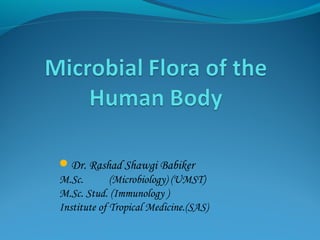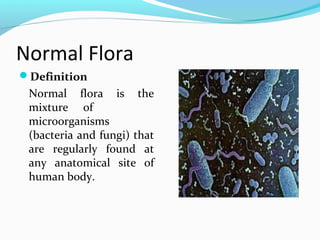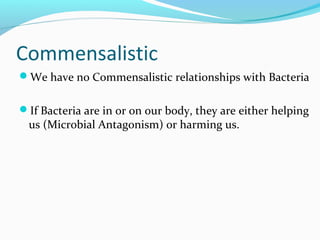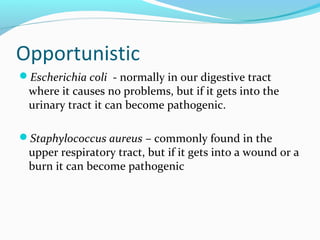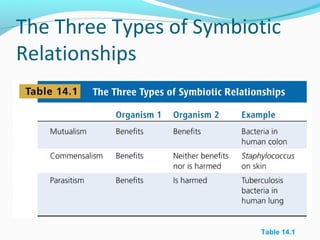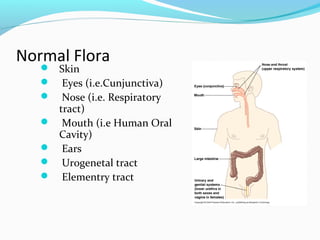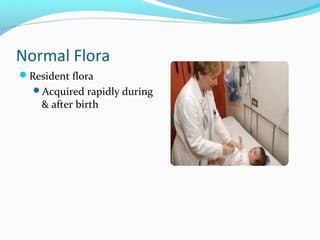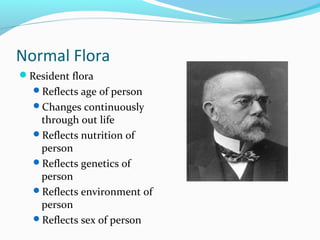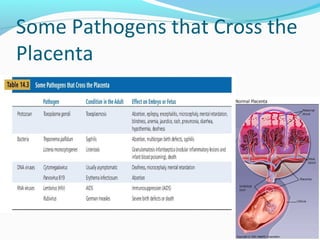This document discusses normal flora and its relationship to the human body. It defines normal flora as microorganisms commonly found on and inside the human body. These microbes exist in either mutualistic, commensal, or opportunistic relationships with their human hosts. The document outlines several types of normal flora, including resident flora that always live on the body and transient flora that only remain for short periods. It also explains how normal flora can protect the body but also potentially cause disease.
